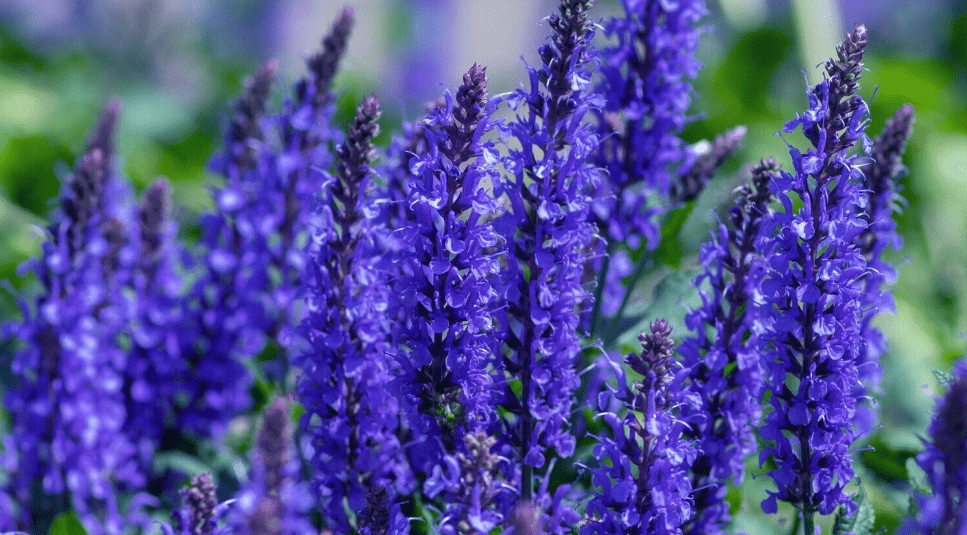
Enhance Your Garden with the Blue Salvias Plant
The Blue Salvias plant is a beautiful addition to any garden, and in this post, we’ll explore the many benefits and beauty of this stunning plant. Whether you’re a seasoned gardener or just starting out, we’ll provide tips on how to enhance your garden with the Blue Salvias plant, and how to care for it to ensure it thrives in your outdoor space. Whether you’re looking to add a pop of color to your garden or attract pollinators, the Blue Salvias plant is a fantastic choice.
Table of Contents
ToggleUnderstanding Blue Salvias
A. Botanical Information
The Blue Salvias plant, also known as Salvia farinacea, is a perennial herb that belongs to the mint family. It is native to Texas and Mexico and is known for its vibrant blue or purple flowers that bloom from spring to fall. It is a low-maintenance plant that is drought-tolerant and attracts pollinators such as butterflies and hummingbirds.
B. Varieties of Blue Salvias
There are several varieties of Blue Salvias to choose from, each with its own unique features and characteristics. Some popular varieties include ‘Victoria Blue,’ ‘Mystic Spires Blue,’ and ‘Henry Duelberg.’ These varieties differ in terms of their height, flower color, and growth habits, so it’s important to choose the one that best suits your garden’s needs.
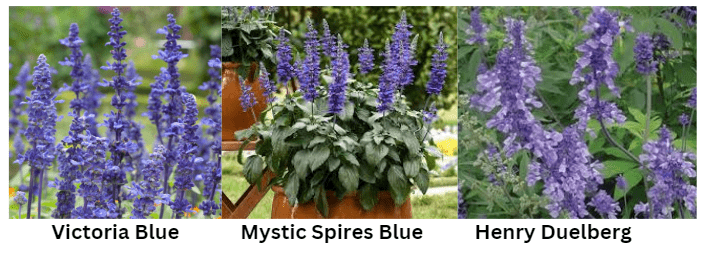
Benefits of Growing Blue Salvias
A. Aesthetic Appeal
One of the main benefits of growing Blue Salvias is their aesthetic appeal. Their vibrant blue or purple flowers add a pop of color to any garden or landscape. In addition, they are known for their long bloom period, providing continuous beauty throughout the growing season. Their attractive appearance makes them a popular choice for gardeners looking to add visual interest to their outdoor spaces.
B. Attracting Pollinators
Blue Salvias are also great for attracting pollinators such as bees, butterflies, and hummingbirds. Their nectar-rich flowers provide a valuable food source for these beneficial insects and birds, helping to support local ecosystems and biodiversity. By growing Blue Salvias, gardeners can contribute to the health and well-being of pollinators in their area.
C. Low Maintenance
Another benefit of growing Blue Salvias is their low maintenance nature. These plants are drought-tolerant and require minimal care once established. They are also resistant to pests and diseases, making them a hassle-free addition to any garden. Their ease of care makes them an ideal choice for busy gardeners or those looking for low-maintenance landscaping options. Overall, Blue Salvias offer a range of benefits, from their attractive appearance to their eco-friendly qualities, making them a popular choice for many gardeners.
Planting Blue Salvias
A. Choosing the Right Location
When choosing a location to plant Blue Salvias, it’s important to consider their specific needs. These plants thrive in full sun or partial shade, so be sure to select a spot in your garden that receives enough sunlight. Additionally, Blue Salvias prefer well-drained soil, so be sure to choose a location with good drainage. By taking these factors into account, you can ensure that your Blue Salvias will thrive in their new environment.
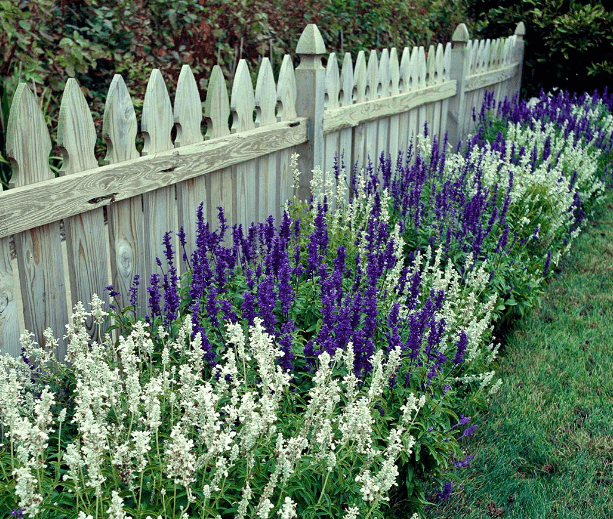
B. Preparing the Soil
1. Soil amendments and pH level considerations
Before planting Blue Salvias, it’s important to prepare the soil to provide them with the best growing conditions possible. Adding organic matter, such as compost or peat moss, can help improve the soil structure and provide essential nutrients for the plants. Additionally, it’s important to consider the pH level of the soil. Blue Salvias prefer slightly acidic soil with a pH level between 6.0 and 7.0. You can test the soil’s pH level with a soil testing kit and make any necessary adjustments with the addition of lime or sulfur. By preparing the soil in advance, you can create an optimal environment for your Blue Salvias to thrive.
C. Planting Steps
1. Seed vs. transplants
When it comes to planting Blue Salvias, you have the option of starting from seeds or using transplants. Starting from seeds gives you the opportunity to grow the plant from the very beginning, but it requires more time and attention. Transplants, on the other hand, are already established plants that can be planted directly into your garden. Whichever option you choose, it’s important to consider the pH level of the soil and prepare it accordingly for the best results.
2. Spacing and planting depth
When planting Blue Salvias, it’s important to consider the spacing and planting depth. For spacing, it’s recommended to plant them about 12-18 inches apart to allow for adequate air circulation and prevent overcrowding. As for planting depth, you’ll want to ensure that the roots are covered with soil, but not buried too deeply. A general rule of thumb is to plant them at the same depth as they were in their original container or nursery pot. This will help promote healthy growth and establishment in your garden.
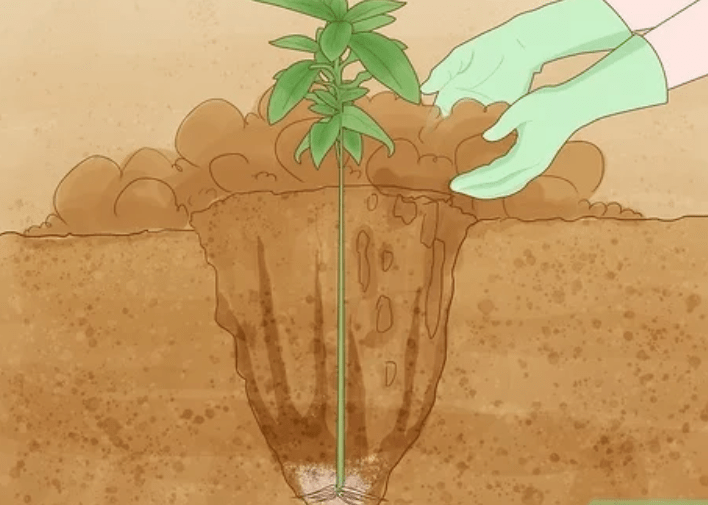
3. Watering immediately after planting
After planting Blue Salvias, it’s important to give them a good watering immediately to help settle the soil around the roots and reduce any air pockets. Be sure to water thoroughly but avoid over-saturating the soil. After the initial watering, it’s important to continue to monitor the moisture levels and water the plants as needed, especially during dry periods. This will help ensure that the new plants establish well and thrive in their new environment.
Caring for Blue Salvias
A. Watering Requirements
Blue Salvias prefer consistently moist soil, but they don’t like to be waterlogged. It’s important to water them deeply and thoroughly, allowing the water to penetrate the soil and reach the roots. However, it’s equally important to let the soil dry out slightly between waterings to prevent issues such as root rot. During hot and dry periods, you may need to water them more frequently, but be sure to always check the soil moisture before watering to avoid overwatering. Adding a layer of mulch around the plants can also help retain moisture and regulate soil temperature. Overall, it’s important to strike a balance and provide consistent, appropriate hydration for Blue Salvias to thrive.
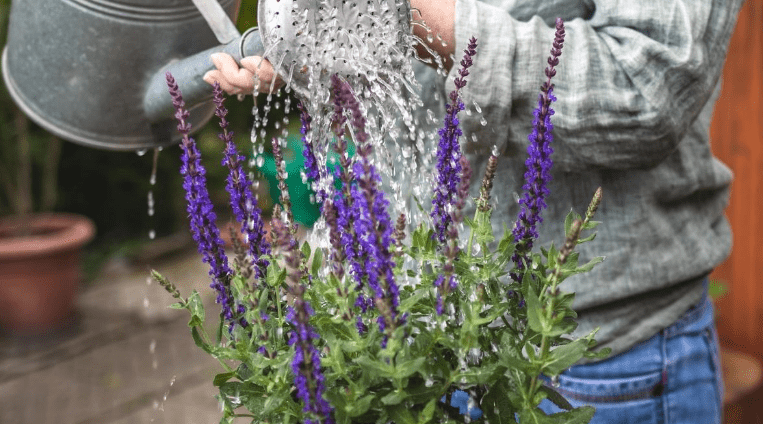
B. Fertilization
Blue Salvias benefit from regular fertilization to promote healthy growth and vibrant blooms. A balanced, all-purpose fertilizer can be applied in the spring as new growth emerges, and then again in midsummer to encourage continued flowering. Be sure to follow the instructions on the fertilizer packaging and avoid over-fertilization, as this can lead to excessive foliage growth at the expense of flowers. Additionally, using a slow-release or organic fertilizer can provide a steady supply of nutrients over time. It’s important to fertilize Blue Salvias in moderation and with the proper timing to support their overall well-being and blooming potential.
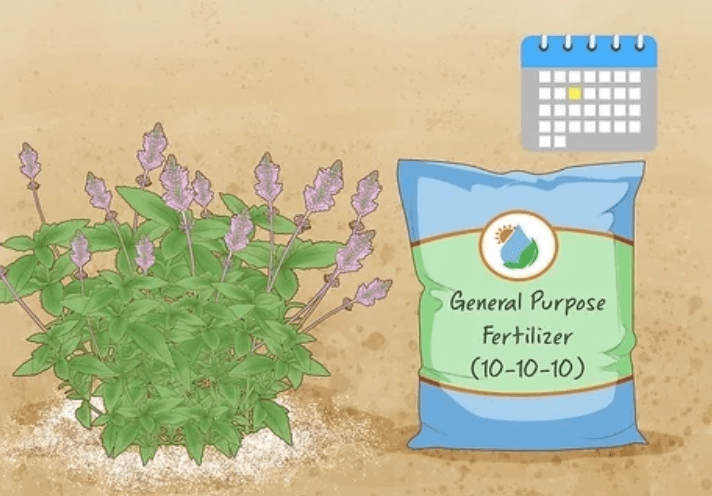
C. Pruning and Deadheading
Pruning and deadheading are important tasks for maintaining the health and appearance of Blue Salvias. Regular pruning can help promote bushier growth and prevent the plant from becoming leggy. Deadheading, or removing spent flowers, can encourage the plant to produce more blooms and also prevent the formation of seeds, which can divert energy away from flower production. It’s best to prune and deadhead Blue Salvias throughout the growing season, especially for varieties that have a long flowering period. Be sure to use sharp, clean tools and make cuts just above a set of healthy leaves or a bud to promote new growth. With regular pruning and deadheading, Blue Salvias can remain healthy and continue to produce beautiful, vibrant blooms.
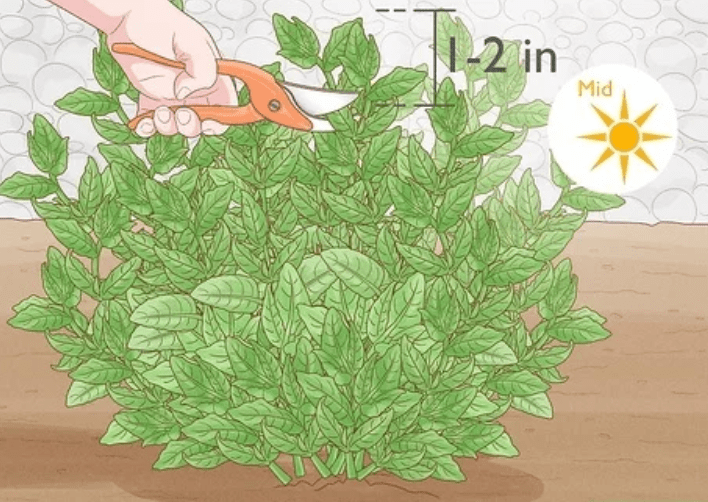
D. Pest and Disease Management
Pest and disease management is essential for maintaining the health of Blue Salvias. Common pests that can affect these plants include aphids, spider mites, and whiteflies, while diseases such as powdery mildew and root rot can also be problematic. It’s important to regularly inspect the plants for any signs of pests or disease and take prompt action if any issues are detected.
To manage pests, you can use insecticidal soap or neem oil, which are effective and safe options for controlling aphids, spider mites, and whiteflies. For diseases, it’s important to ensure that the plants are not overwatered and that they have good air circulation to prevent the development of powdery mildew and root rot. Fungal diseases can also be treated with fungicides labeled for use on salvias.
It’s also a good idea to practice good garden hygiene by removing any debris or dead plant material, as these can harbor pests and disease. Additionally, promoting a healthy growing environment by providing adequate sunlight, well-draining soil, and proper watering can also help prevent pest and disease issues.
By being proactive in managing pests and diseases, you can help ensure that your Blue Salvias remain healthy and vibrant.
Propagating Blue Salvias
A. Seed Propagation
Seed propagation is a simple and cost-effective method for propagating Blue Salvias. To start, collect the seeds from mature plants and sow them in a seed-starting mix. Keep the soil consistently moist and provide adequate sunlight for the seeds to germinate. Once the seedlings have developed several sets of true leaves, they can be transplanted into individual pots or directly into the garden. It’s important to keep the young plants well-watered and protected from extreme temperatures as they establish themselves. With proper care, Blue Salvias can be easily propagated from seed and will continue to thrive in your garden.
B. Cutting Propagation
Cutting propagation is another method for propagating Blue Salvias. To start, take cuttings from a mature plant, making sure to include a few sets of leaves and a portion of the stem. Remove any bottom leaves and dip the cut end of the stem in the rooting hormone to encourage root development. Plant the cuttings in a well-draining potting mix and keep the soil consistently moist. Place the pot in a warm, humid environment with indirect sunlight to promote root growth. Once roots have developed, the cuttings can be transplanted into individual pots or directly into the garden. With proper care, cuttings can be a successful method for propagating Blue Salvias and will result in new plants that are genetically identical to the parent plant.
Designing Your Garden with Blue Salvias
A. Companion Planting
Companion Planting is a great way to enhance the beauty and health of your garden. Blue Salvias are a wonderful addition to any garden and can be paired with a variety of other plants to create a stunning and harmonious display. When choosing companion plants for Blue Salvias, consider plants that have similar growth requirements and complement the color and shape of the salvias. Some great companion plants for Blue Salvias include lavender, Russian sage, and yellow coreopsis. These plants not only look beautiful together but also attract beneficial pollinators and provide a diverse habitat for wildlife in your garden. When planting Blue Salvias and their companion plants, consider the height and spread of each plant to create a balanced and visually appealing arrangement. Additionally, be mindful of the sunlight and moisture requirements of each plant to ensure they thrive in their shared space. By carefully selecting and arranging companion plants, you can enhance the beauty and functionality of your garden while creating a thriving ecosystem for plants and wildlife.
B. Garden Layout Ideas
When planning a garden layout for Blue Salvias and their companion plants, it’s important to consider both the aesthetic and practical aspects. You’ll want to choose plants that not only look good together but also have similar growth requirements. For Blue Salvias, some great companion plants to consider are lavender, Russian sage, and yellow coreopsis.
These plants not only complement the color and shape of the salvias but also attract beneficial pollinators and provide a diverse habitat for wildlife in your garden. When arranging them, consider the height and spread of each plant to create a balanced and visually appealing arrangement. Also, be mindful of the sunlight and moisture requirements of each plant to ensure they thrive in their shared space.
By carefully selecting and arranging companion plants, you can enhance the beauty and functionality of your garden while creating a thriving ecosystem for plants and wildlife. So when planning your garden layout, keep in mind the growth requirements and visual appeal of the plants to create a harmonious and vibrant landscape.
Seasonal Care Tip
A. Winter Care
When it comes to winter care for your Blue Salvias and their companion plants, it’s important to protect them from harsh weather conditions. Consider mulching around the base of the plants to provide insulation and protect their root systems. You may also want to consider covering them with a frost cloth or other protective covering during particularly cold nights. It’s also a good idea to continue watering your plants throughout the winter, especially during dry periods, to ensure they stay healthy and hydrated. By taking these steps, you can help your salvias and their companions survive the winter and thrive once the warmer weather returns.
B. Spring and Summer Care
In the spring and summer, it’s important to focus on maintaining the health and vibrancy of your Blue Salvias and their companion plants. Make sure to prune back any dead or overgrown growth to promote new growth and keep your plants looking tidy and healthy. Regularly check for pests and diseases, and treat any issues promptly to prevent them from spreading. It’s also important to provide consistent watering to keep your plants hydrated and thriving during the warmer months. Additionally, consider fertilizing your plants to provide them with the nutrients they need to grow and flower. By following these care tips, you can help your Blue Salvias and their companions thrive during the spring and summer seasons.
Troubleshooting Common Issues
A. Yellowing Leaves
Yellowing leaves can be a sign of several different issues with your Blue Salvias and their companion plants. It could indicate overwatering, nutrient deficiencies, or even pests and diseases. It’s important to first determine the cause of the yellowing leaves before taking action. Check the soil moisture levels to make sure you’re not overwatering, and consider adjusting your watering schedule if necessary. If you suspect a nutrient deficiency, consider applying a balanced fertilizer to provide the necessary nutrients to your plants. Lastly, be on the lookout for any signs of pests or diseases, and treat them promptly to prevent further damage to your plants. By addressing the underlying cause of the yellowing leaves, you can help your plants regain their health and vitality.
B. Lack of Blooms
The lack of blooms could be a result of not enough nutrients in the soil. Consider applying a fertilizer that is specifically formulated to promote blooming in your particular type of plant.
It’s also important to consider the age of your plants, as some may take time to establish before they start flowering. If your plants are still young, they may just need more time to mature before they begin to bloom.
Overall, addressing the specific needs of your plants, such as sunlight, soil, and nutrients, can help encourage blooming. If you’ve addressed these factors and still see no improvement, it may be helpful to consult with a local nursery or gardening expert for further guidance.
C. Pest Infestations
Pest infestations can greatly impact the health and blooming of your plants. It’s important to regularly inspect your plants for any signs of pests, such as chewed leaves or visible insects. If you notice any pests, it’s important to take action to remove them promptly. You can try using natural or organic pest control methods, such as introducing beneficial insects or using neem oil. Additionally, keeping your garden clean and free of debris can help prevent pest infestations. If the infestation is severe, you may need to consider using chemical pesticides as a last resort. It’s important to carefully follow the instructions and precautions when using any type of pesticide. Keeping a vigilant eye on your plants and taking proactive measures to prevent pest infestations can help promote healthy blooming.
Environmental Benefits of Blue Salvia
A. Supporting Local Ecosystems
One of the environmental benefits of blue salvia is that it supports local ecosystems. Blue salvia is a native plant in North America, and it provides food and habitat for local wildlife, such as pollinators and birds. By planting blue salvia in your garden, you can help support the local ecosystem and promote biodiversity. Additionally, blue salvia requires minimal water and maintenance, making it a sustainable choice for a garden plant. Overall, incorporating blue salvia into your garden can have positive environmental impacts by supporting local ecosystems.
B. Drought Resistance
Another environmental benefit of blue salvia is its drought resistance. This means that it can thrive in dry conditions and requires minimal water to grow and flourish. By choosing blue salvia for your garden, you can help conserve water resources and reduce the need for irrigation. This not only benefits the environment by promoting water conservation, but it also saves you time and effort in maintaining your garden. Overall, the drought resistance of blue salvia makes it an environmentally-friendly choice for landscaping and gardening.
In conclusion, adding Blue Salvias to your garden can bring a pop of vibrant color and attract pollinators like butterflies and hummingbirds. These plants are low maintenance and can thrive in a variety of climates, making them a great addition to any garden. With proper care and attention, your garden can be transformed into a beautiful and inviting space with the addition of Blue Salvias. So, if you’re looking to enhance the beauty of your garden, consider adding these stunning plants to your outdoor space.
Frequently Asked Questions (FAQs)
Blue salvias are not only beautiful, but they also attract pollinators such as bees and butterflies. They are also low maintenance and drought-resistant, making them a great addition to any garden.
Blue salvias thrive in well-drained soil and full sun. They require regular watering, but be careful not to overwater as they are drought-resistant. Deadheading spent flowers will encourage more blooms.
The best time to plant blue salvias is in the spring, after the last frost has passed. This will give them the best chance to establish themselves before the heat of summer.
Blue salvias can grow anywhere from 12 inches to 36 inches tall, depending on the variety. Be sure to choose a variety that fits the space you have available in your garden.
Yes, blue salvias can be planted in containers as long as the containers have good drainage. This makes them a versatile plant that can be added to any garden or patio space.
Yes, blue salvias are known to be deer resistant, making them a great option for gardens in areas with deer populations.
Blue salvias are not heavy feeders, but a light application of balanced fertilizer in the spring can help promote healthy growth and blooming.
Blue salvias can bloom from early summer to the first frost, providing a long-lasting burst of color in your garden.
